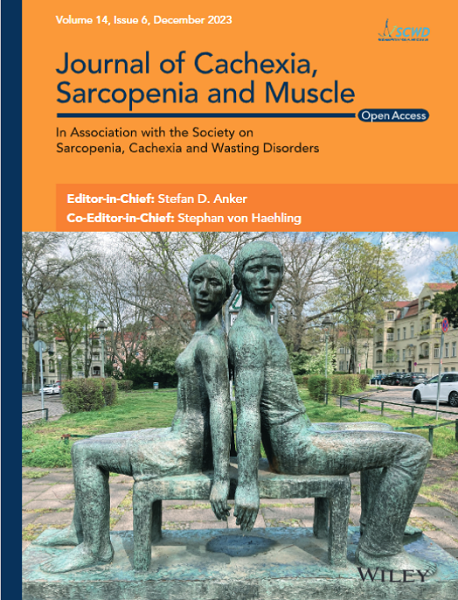This study aimed to evaluate the effects of an oral nutritional supplement (ONS) enriched with hydroxy-methyl-butyrate (HMB) in subjects with disease-related malnutrition (DRM) and to monitor these effects with an ultrasound Imaging System, based on artificial intelligence, in a real-world study.
Fifty consecutive adult patients with DRM were enrolled. The malnutrition was diagnosed by Global Leadership Initiative on Malnutrition (GLIM) criteria. For 3 months, the patients received nutritional education, and medical nutrition therapy was started with an adapted oral diet and two servings of an oral nutritional supplementation (ONS) with a hyperproteic hypercaloric formula (HMB—enriched). All patients were studied at baseline, and 3 months after intervention, with a nutritional assessment (anthropometry, bioelectrical impedanciometry [BIA], muscle ultrasonography and biochemical parameters). Ultrasound images were automatically quantified using an AI-based ultrasound imaging system.
The study included 50 patients (21 men and 29 women) with a mean age of 57.8 ± 18.1 years. Following treatment with the HMB-enriched ONS, the prevalence of sarcopenia decreased significantly (from 24% to 18%; p = 0.01) and severe malnutrition (from 14% to 2%; p = 0.01). An improvement in BIA parameters; phase angle (0.14 ± 0.02°; p = 0.02); phase angle index (0.07 ± 0.01°/m2; p = 0.01); fat free mass (1.31 ± 0.12 kg; p = 0.006); skeletal muscle mass (0.51 ± 0.11 kg; p = 0.01); and skeletal muscle mass index (0.31 ± 0.13 kg/m2; p = 0.01) were reported. Functional parameters as handgrip strength (1.36 ± 0.21 kg; p = 0.009) and seconds of time up and go test (1.16 ± 0.15 s; p = 0.02) showed also an improvement. The AI-based ultrasound system detected a significant increase in the thickness of the vastus intermedius muscle (TVI) (0.09 ± 0.01 cm; p = 0.008) and an increase of the rectus femoris (TRF) (1.06 ± 0.4 cm; p = 0.07) with the consequence of a significant increase of the (TVITRF) (0.15 ± 0.02 cm; p = 0.008). The sarcopenia index is also significant (1.03 ± 0.3 cm; p = 0.03). Muscle quality, as assessed by echogenicity analysis, improved significantly: muscle index (Mi) (0.04 ± 0.01; p = 0.04) and (fat index) FATi (−0.03 ± 0.01; p = 0.03).
The use of an HMB-enriched ONS in DRM patients, combined with AI-based ultrasound imaging for follow-up, significantly improved their nutritional status, muscle mass and muscle quality as assessed by echogenicity.



